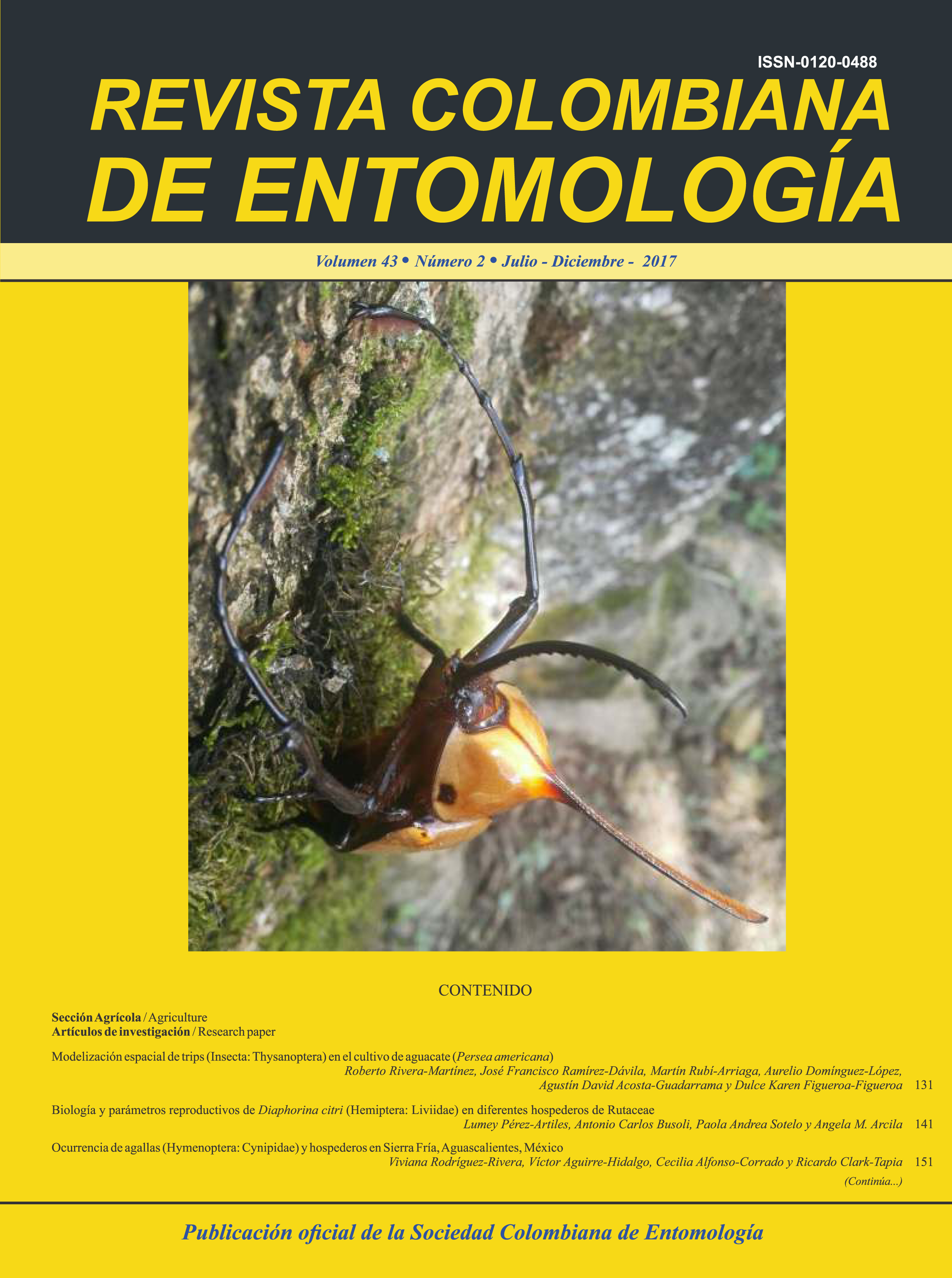Alpha and beta diversity of epigean arthropods (Arthropoda) in three sectors on the Eastern Cordillera of Colombia
Main Article Content
The soil arthropods are an important component of the soil biota for their species diversity, function, and
as tool to evaluate the habitat conservation state. The conservation state of three sectors in an ecosystem of high mountain (Socha, Tasco and Socotá in Boyacá, Colombia) was evaluated measuring alpha and beta diversity of epigean arthropods assemblage in particular Acari and Collembola. Pitfall traps were installed on transects for each sector; the alpha diversity was measured through Berger-Parker index and a gamma-binomial model was used to obtain a parameter α, which describes the fitting to species abundance distribution. The species diversity estimation was established with coverage-based rarefaction and extrapolation curves, and the beta diversity was measured in species replacement and richness difference. The alpha diversity did not show statistical differences between sectors, but with the highest species richness in the sector of Socotá. The α parameter indicated that the sector of Socotá is the better conserved; similar to that obtained with Acari and Collembola. The spatial turnover or species richness difference showed changes with respect to the sector and taxonomic group (Acari or Collembola), explained by vegetation structure, erosion, and aggregate distribution of epigean arthropods. The species replacement did the main contribution to total beta diversity by sectors while in Acari and Collembola the species replacement was highest in Tasco in contrast to the richness difference in Socha and Tasco. The utility of epigean arthropods to evaluate the soil quality and the partition of the beta diversity in their components was discussed.

This work is licensed under a Creative Commons Attribution-NonCommercial-ShareAlike 4.0 International License.
Authors retain the copyright on their work and are responsible for the ideas expressed in them. Once a manuscript is approved for publication, authors are asked for a publication license for the term of legal protection, for all territories that allows the use, dissemination and disclosure of the same.





